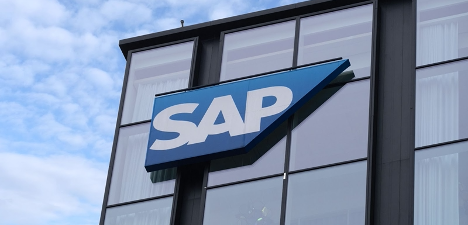
SAP (NYSE: SAP) released its Q2 FY2024 earnings report on Monday after the market closed. SAP’s second-quarter results surpassed analyst expectations on the top and bottom line as the company demonstrated continued robust growth in its cloud segment, and especially its cloud ERP business—a nice validation of its strategic focus on cloud ERP over the past few years. The Q2 gains maintained SAP’s recent track record of delivering on its overall strategy and helped it achieve its first double-digit revenue increase in five years. Investors were quick to respond, and SAP’s share price has risen 7% on the back of the earnings report.
On the earnings call, the company said that AI played a crucial role in SAP’s ERP and line-of-business (LoB) sales, as almost 20% of deals in Q2 included premium AI use cases. SAP classifies sales as LoB when they are for modules in SAP S/4HANA that correspond to specific business functions such as asset management or R&D, as opposed to enterprise-wide agreements. Selling into these LoB areas is a key aspect of the company’s land-and-expand strategy, which we discuss more below. The company said its AI strategy is helping to boost the pipeline for its RISE with SAP offering, as more customers see the value in SAP’s ability to embed AI in their core business operations. In a clear case of practicing what it preaches, SAP is rolling out various AI use cases internally to automate and streamline its own operations in areas such as software development and support ticketing.
During an analyst Q&A, SAP CEO Christian Klein shared some details about this and emphasized how the company’s efficiency gains are contributing to its success. “We are never running out of ideas [for] efficiency,” he said. “When you see how we can streamline our operations, we can expand our digital marketing channel connected to our reseller channel in sales, or we can connect it to our back office function. That will unveil a lot of additional synergies just by running SAP more end-to-end, and then we’re going to infuse automation. When we talk about AI coding development, we’ll see a huge productivity gain. . . . So overall, inside SAP, we are rolling out currently 30 AI use cases—and that’s the way to go.”
Here’s an overview of the numbers.
Performance versus Expectations
- Q2 FY2024 Revenue: €8.29 billion, a 10% increase year-over-year (Expected: €8.25 billion)
- Q2 FY2024 EPS (non-IFRS): €1.10 (Expected: €1.09)
Other Key Q2 FY2024 Numbers
- Q2 FY2024 Cloud and software revenue: €7.17 billion, up 10% YoY
- Q2 FY2024 Cloud revenue: €4.15 billion, up 25%
- Q2 FY2024 Cloud ERP Suite revenue: €3.41 billion, up 33%
- The company notes that this is the 10th consecutive quarter for this figure to grow by more than 30%, which it takes as proof of the soundness of its cloud ERP strategy.
- Q2 FY2024 Software licenses revenue: €0.2 billion, down 28%
Analyst Notes
SAP’s land-and-expand strategy is working. This involves a multi-phase approach for larger enterprise customers, beginning with implementing solutions such as ERP, the Business Technology Platform (BTP), or SuccessFactors and gradually growing into additional areas like procurement, travel, and supply chain management. For mid-market customers, SAP empowers its channel partners to rapidly provision supplementary solutions such as procurement or travel after an initial finance or HR implementation. This approach—which takes advantage of the breadth of the company’s product portfolio—and the growth in SAP’s modular cloud ERP offerings should facilitate the company’s overall market-share growth and revenue generation as customers increasingly adopt a broader range of SAP solutions.
SAP is strategically investing in RISE with SAP and its cloud ERP solutions. The company aims to capture a substantial share of the rapidly expanding cloud ERP market, which is expected to contribute significantly to the overall ERP software market. This market is projected to reach $239 billion by 2032. This significant growth potential and the ongoing shift towards cloud-based enterprise solutions positions SAP to capitalize on the increasing demand for flexible and scalable ERP systems.
Key Q2 2024 customer wins across SAP’s solution portfolio include major companies such as ExxonMobil, Porsche Informatik, and Xerox that chose RISE with SAP for their end-to-end business transformations. Meanwhile, Pure Storage and Wegmans successfully implemented SAP S/4HANA Cloud. SAP reported that its cloud revenue performance was solid in Asia, the Pacific, and Japan (APJ) and Europe, the Middle East, and Africa (EMEA), with outstanding growth in Brazil, Canada, Germany, India, Japan, and South Korea.
On the call, SAP also mentioned solution partners and real-world customers such as Ernst & Young and Lenovo. The Moor Insights & Strategy team recently wrote an analysis of SAP’s annual Sapphire conference suggesting that the company should expose more real-world customer stories. Whether the SAP team specifically heard us or not, we appreciate the effort to present a customer-centric narrative.
While SAP typically highlights its sustainability efforts in earnings reports, this focus was notably decreased in the latest earnings call, despite the company’s continued development of sustainability offerings and the announcement of its Green Ledger initiative at the Sapphire event.
SAP also didn’t specifically address SuccessFactors updates on this quarterly earnings call, but the company’s partnership with Microsoft to integrate AI into its HCM solutions is a significant recent development. This collaboration aims to tackle the talent gap in the technology sector by leveraging Microsoft 365 Copilot and Azure OpenAI Service within SAP SuccessFactors. The integration should enhance recruitment processes, improve onboarding and employee experiences, identify skills gaps, and personalize learning and development opportunities.
AI Is on the RISE
The company has shown a commitment to AI integration and innovation and is focused on simplifying the process of transitioning on-premises ERP clients to SAP S/4HANA Cloud. It has integrated AI into its RISE with SAP packages, giving all customers access to AI tools such as its Joule assistant and Microsoft Copilot in SAP S/4HANA Cloud. This integration supports improvements in application development, data analytics, and supplier collaboration.
On the earnings call, Klein shared that initial use cases for SAP’s AI assistant, Joule, are now operational in HR and supply chain functions. He described the AI features as “very popular,” noting that 150,000 Concur users per week are using them. This reflects a growing trend of businesses adopting AI-powered tools to automate tasks particularly in areas prone to human error, such as expense management. For functions like this, AI’s ability to analyze data and ensure accuracy can lead to significant cost savings and reduced risk, while also making processes less tedious for users.
By the end of 2024, SAP anticipates that users will be able to manage a significant majority (80%) of the most frequently used SAP business transactions with Joule, further reinforcing the reach of the company’s AI strategy.
SAP’s Pressures
- SAP must continue implementing updated processes to support customers through their cloud journey. To date, 6,000 out of 25,000 clients have transitioned to SAP S/4HANA Cloud.
- SAP is still working through its restructuring program as the company looks to increase its focus on AI. Restructuring expenses during Q2 were €0.6 billion (bringing the total to €2.9 billion for the first half of 2024). SAP said a “mid-triple-digit million amount [restructuring charge] is expected to occur in 2025” when the restructuring concludes. While the restructuring is for the long-term benefit of the company, there are short-term financial and operational implications that affect 9,000 to 10,000 positions. This is an upward guidance from the prior announcement of 8,000 positions affected. (During the call, CFO Dominik Asam was careful to note that “the number of affected positions does not imply complete elimination of these roles but allows us to refine our setup in terms of skills and locations.”)
- Amidst its restructuring, the company must continue to manage its human capital needs. Building and maintaining AI-driven solutions requires specialized skills that may be in high demand and difficult to acquire. Acquiring top talent on the heels of a large restructuring can also be challenging as applicants could feel uneasy about the job’s stability.
- SAP must continue to manage customer expectations and needs as customers transition to cloud-based ERP solutions. This changeover can be slow and complex; customers often require careful planning, specialized skills, and significant investment to migrate to the cloud successfully.
- SAP must ensure that its on-premise solutions continue to remain relevant and valuable to cater to customers who may never fully transition to the cloud.
Looking Forward
The company set its 2024 revenue guidance at €17.0 to €17.3 billion in cloud revenue, a 24% to 27% increase from 2023. It projects €29.0 to €29.5 billion in cloud and software revenue for the year.
SAP has revised its financial goals for 2025, now projecting a higher non-IFRS operating profit of approximately €10.2 billion, an increase from the previously estimated €10 billion. The company attributed this upward revision to the expected benefits of the company’s ongoing transformation program. SAP maintains its projections for cloud revenue to surpass €21.5 billion, total revenue to exceed €37.5 billion, and non-IFRS cloud gross profit to reach approximately €16.2 billion by 2025.
SAP’s strong Q2 2024 financial results underscore CEO Klein’s commitment to delivering on the company’s cloud transformation strategy. As Moor Insights & Strategy had previously noted following MI&S CEO and chief analyst Patrick Moorhead’s conversation with Klein, our team came away with strong confidence in SAP’s ability to transition its larger customers to cloud-based ERP solutions successfully. These latest financials validate this confidence and signal a positive trajectory for SAP’s continued growth in the cloud ERP market.
While we are confident in SAP’s ability to execute its AI strategy, we will closely observe how it navigates the hurdles of integrating complex technologies, especially in the face of fierce competition from other major players in the AI landscape.
Recent MI&S SAP Research
SAP Charts A Course For The AI-Driven Enterprise At Sapphire 2024 — July 12, 2024, by Robert Kramer, Jason Andersen, and Melody Brue
MI&S Hot Desk Pod Episode 27: SAP Sapphire — June 20, 2024, by Melody Brue and Robert Kramer
The Six Five Podcast: SAP Sapphire Orlando 2024 — June 11, 2024, by Patrick Moorhead
The Six Five Insider: Exploring SAP’s AI Strategy with Walter Sun — March 4, 2024, by Patrick Moorhead

























































































